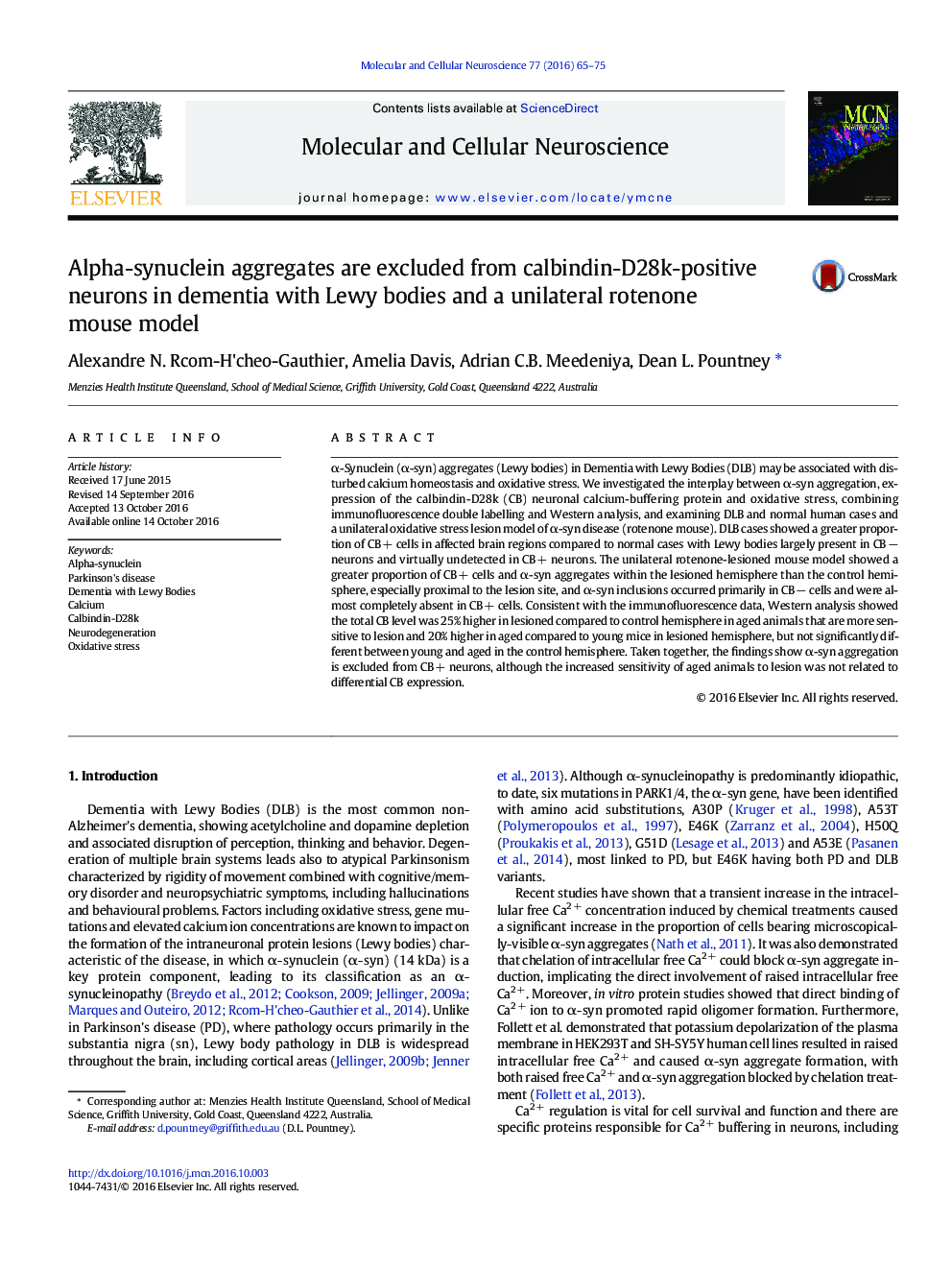| Article ID | Journal | Published Year | Pages | File Type |
|---|---|---|---|---|
| 5534457 | Molecular and Cellular Neuroscience | 2016 | 11 Pages |
â¢Calbindin-D28k cells increased in mouse model and DLB brain tissue.â¢Alpha-synuclein aggregates not present in calbindin-D28k expressing cells.â¢Increased calbindin-D28K cells and expression in aged compared to young mouse modelâ¢Calbindin-D28k may protect against alpha-synuclein aggregation and cell loss.
α-Synuclein (α-syn) aggregates (Lewy bodies) in Dementia with Lewy Bodies (DLB) may be associated with disturbed calcium homeostasis and oxidative stress. We investigated the interplay between α-syn aggregation, expression of the calbindin-D28k (CB) neuronal calcium-buffering protein and oxidative stress, combining immunofluorescence double labelling and Western analysis, and examining DLB and normal human cases and a unilateral oxidative stress lesion model of α-syn disease (rotenone mouse). DLB cases showed a greater proportion of CB + cells in affected brain regions compared to normal cases with Lewy bodies largely present in CB â neurons and virtually undetected in CB + neurons. The unilateral rotenone-lesioned mouse model showed a greater proportion of CB + cells and α-syn aggregates within the lesioned hemisphere than the control hemisphere, especially proximal to the lesion site, and α-syn inclusions occurred primarily in CB â cells and were almost completely absent in CB + cells. Consistent with the immunofluorescence data, Western analysis showed the total CB level was 25% higher in lesioned compared to control hemisphere in aged animals that are more sensitive to lesion and 20% higher in aged compared to young mice in lesioned hemisphere, but not significantly different between young and aged in the control hemisphere. Taken together, the findings show α-syn aggregation is excluded from CB + neurons, although the increased sensitivity of aged animals to lesion was not related to differential CB expression.
